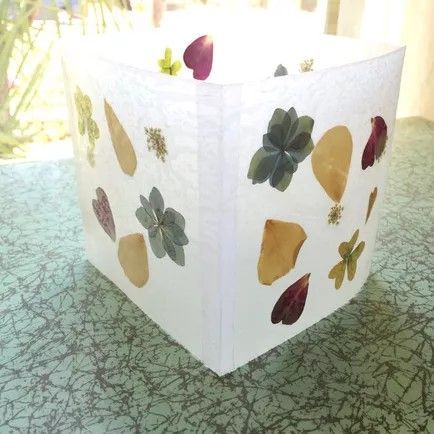Enjoying Outside, Inside - Pressing Flowers

Volunteers at Stebbins Cold Canyon Reserve on May 14
Have you ever wanted to preserve a beautiful flower from someone special, a stunning flower that you saw on your last hike or maybe something you see in your yard everyday but especially like? Using a plant press is a low-tech, easy way to preserve those plants and flowers for long-term keeping. And, not only can you preserve them but you can make really beautiful things to enjoy indoors long after the fresh flowers have withered and disappeared from the trail or your yard.
Sure, you can squash a flower in a heavy book (ironically, I tend to use my Jepson Manual because it’s so heavy) or you can purchase an intricate or elaborate plant press but with just a few things that you probably have in your garage, you can make your own plant press. Not only is it easy and inexpensive but the best part about making your own is that you can make it any size you’d like; make a tiny one to bring with you hiking and a big one to keep at home to preserve bigger plants and flowers. And, it’ll last forever, I still have my plant press that I made for my Plant Taxonomy class a couple of decades ago.
To make your own press, all you need is two flat pieces of plywood, two pieces of cardboard the same size as the wood, old newspaper and rope that you can tie tight. The plywood serves as the top and bottom of the plant press with the cardboard next and newspaper in the middle. I usually leave the bottom piece of plywood and cardboard intact and add layers of newspaper with plants in between as I work up. Choose your flower or plant and place it nicely on the newspaper, the position you see when you lay it on the newspaper is the position that it will dry in so fiddle with it until you are happy. You can do several plants at the same time but be sure to lay a few pieces of newspaper between them so each one presses flat. When you have everything situated, place the top piece of cardboard over the layers of newspaper and then the second piece of plywood over the cardboard. Now wrap the rope around the entire thing and tighten as much as you can, the tighter the rope the flatter the plant will turn out. Standing on the press while you tie the rope isn’t graceful but it does help get the rope tight and using two ropes will help keep things secure. Some plants press better than others, succulents don’t press well because they contain a ton of moisture and can actually get moldy before they are dry. You’ll find that other plants and flowers do press well. Some flowers turn dark as they dry but others will keep their color and actually become more vibrant as the moisture in them leaves. Experiment with different flowers, foliage and positions. It’ll take about three to four weeks for things to completely dry and putting the press in a warm, dry place will help. The back seat of your car is a great place or outside in the Sacramento Valley summer is an excellent too as long as sprinklers don’t get it.
Once your plants are pressed and dried there are so many things you can do with them! They will be brittle so do handle them carefully when you remove them from the press. If you’d like to mount and frame them to hang on the wall begin by making a slurry of plain old Elmer’s glue and an equal amount of water and mix in a shallow pan or tray. You can either carefully brush some of the glue solution onto the plant but a better way is to simply dip the side that you’d like to be the back into the solution and lay it on nice quality paper. Blot away the excess glue and cover with a piece of waxed paper. Using cardboard as the bottom layer you can stack several mounted specimens, each one covered with wax paper so they don’t stick together then place another piece of cardboard on the top and lay something heavy on top of the stack, again the Jepson Manual is an obvious choice. Once the glue is set, you can add the genus and species, date or whatever you’d like to include on the paper and then it’s ready to frame. One of a kind art work!
There are lots and lots of other creative projects using dried flowers. If you enjoy nature journaling, you can press a couple of the flowers you are journaling about and tape or glue them into your journal. You can make your own luminaria and your own customized cell phone cover. Instructions to make your own greeting cards and invitations are available here and peek at this website to learn how to make votive holders and vases using pressed flowers and recycled glass containers.
Crafting with pressed plants and flowers is a great way to bring outside cheer inside!
-Kristie Ehrhardt; kehrhardt@tuleyome.org
Tuleyome Land Conservation Program Manager
RECENT ARTICLES






